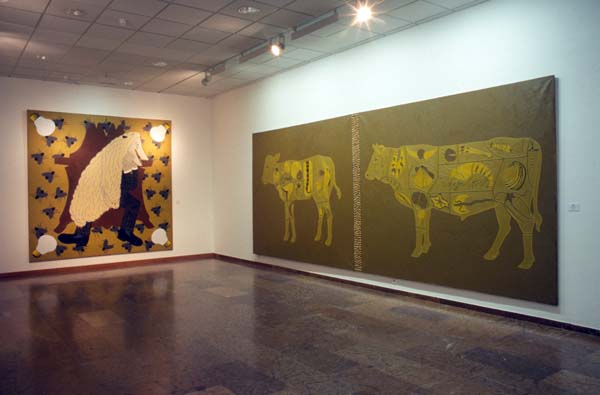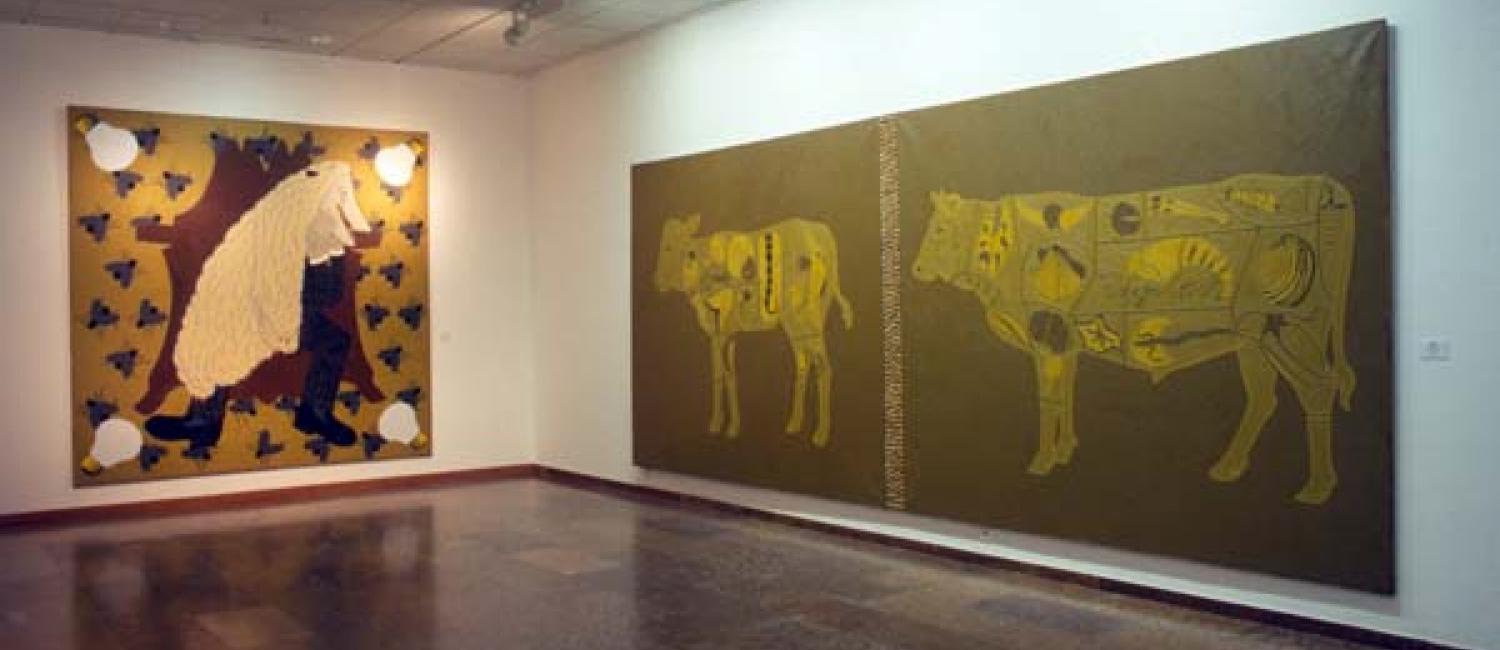An exhibition of Eduardo Arroyo’s work at the Ludwig Museum Budapest – Museum of Contemporary Art opens on January 16, 2003, under the auspices of the Spanish Ministry of Foreign Affairs and the Society of International Cultural Activities (SEACEX). This exhibition opens the series of Spanish art shown abroad in 2003. The exhibition is open to the public until 23rd of February, 2003. Following the directives of the Spanish Cultural Program as defined in 2002, to raise international awareness with regard to Spanish art, the Spanish Ministry of Foreign Affairs in association with the Society of International Cultural Activities introduces the art of the famous Spanish artist Eduardo Arroyo to be seen in Budapest first, and then at the Pushkin Museum in Moscow.The curator of the exhibition, Elena Navarro chose a selection of works from the last 25 years, for the present show. The first work is a triptych of 1976: Réflexions sur l’éxil: Irun-Hendaye, 1939–1976, which exemplifies a repeated motif of the artist: Arroyo passes judgement over the Spanish civil war and its immediate consequence, Franco’s dictatorship. The urban environment steps into the foreground in the 80s, with night-life in focus, and the various forms of life that inhabit it. Apart from these, the series of interiors typical of the period are also among the pictures at the exhibition, with Baile del 14 de julio de 72 kicking them off. The nineties are represented by works created for the Venice Biennial, such as Piel de Toro, piel de cordero, or the works inspired by children’s stories, like Mickey Mouse en el Kremlin of 1998. To quote the curator, “from this point onwards animal symbols and cartoon characters are presented constantly, to become a part of the artists narrative technique.”
Eduardo Arroyo was born in 1937. After he received a diploma in journalism he moved to Paris in 1957, with the purpose of continuing his studies. There he comes into contact with survivors of the Spanish civil war who have been forced into exile. His resistance against the Franco regime gains strength in the process.
He shows his first pieces at the Salon of Young Artists around 1960, and from then on, his art builds on the narrative technique as opposed to the informel. He breaks with the conventional and stereotyped imagery of social realism, and presents the most popular Spanish clichés: from the figure of General Franco to the Toreador. Arroyo sticks to his provocative manner dressed in the critical figurative style of Pop Art, especially in regards to high ranking representatives of the military and Church. As an outstanding artist of figurative art that poses a social and political critique he crosses images of an earlier source with illustrations of his own inspiration.From 1964 onwards he takes a strong stand with regard to the controversial artists of the twentieth century. The lively colourism of his work invites us into Arroyo’s own private world.
Eduardo Arroyo is the most eminent representative of contemporary Spanish painting, who achieved fame not only as a painter, but as a writer and a stage-designer as well.
A comprehensive retrospective exhibition dedicated to Arroyo’s work was organised at the Georges Pompidou Centre in 1982, while the Spanish State gave him the National Award for Fine Arts. A year later the French government bestowed the title of the Knight of the Arts and Literature.

